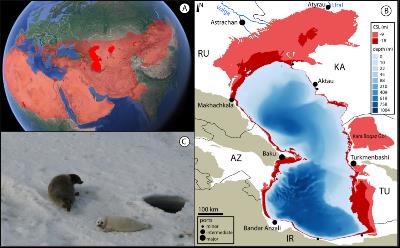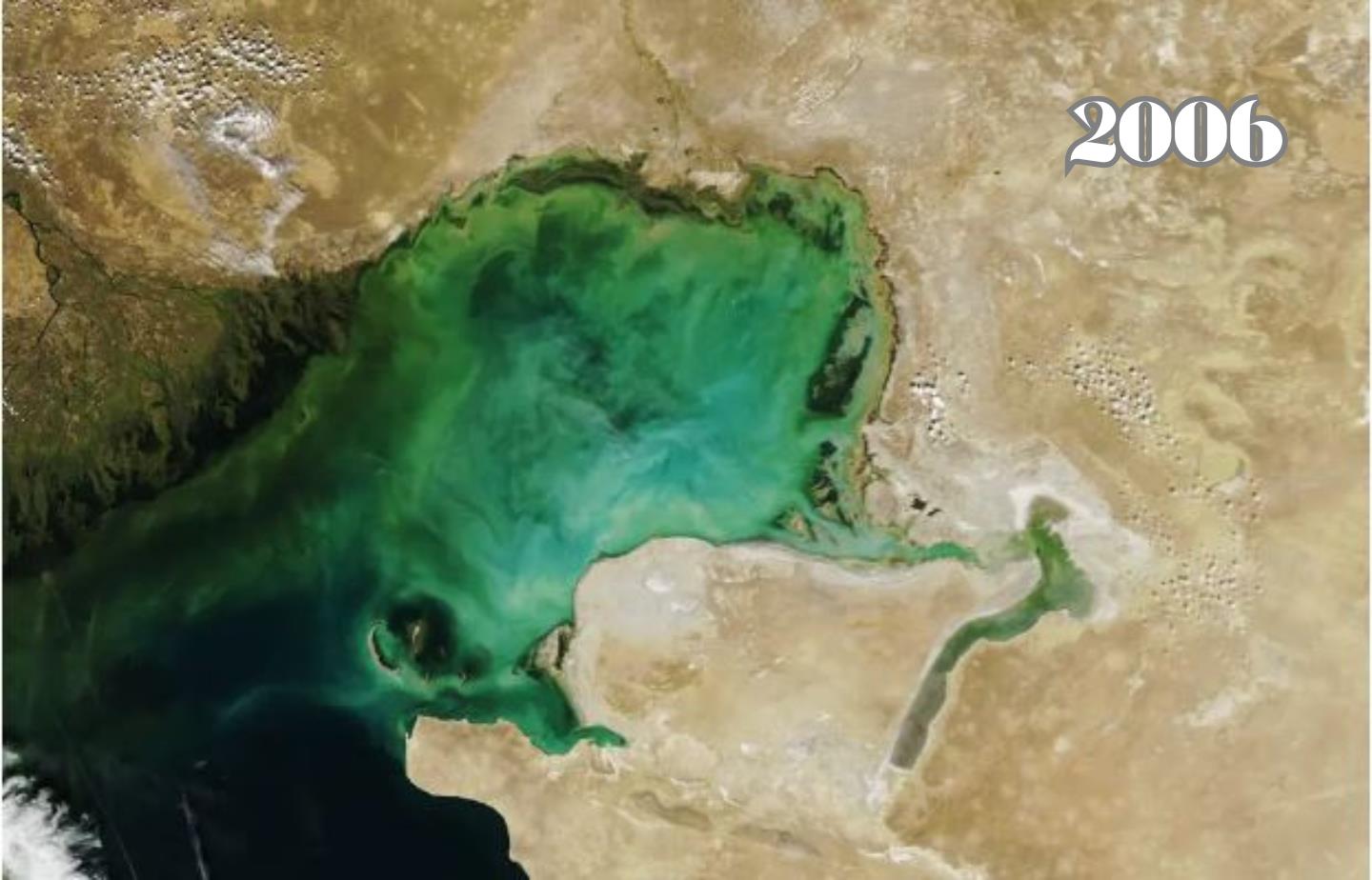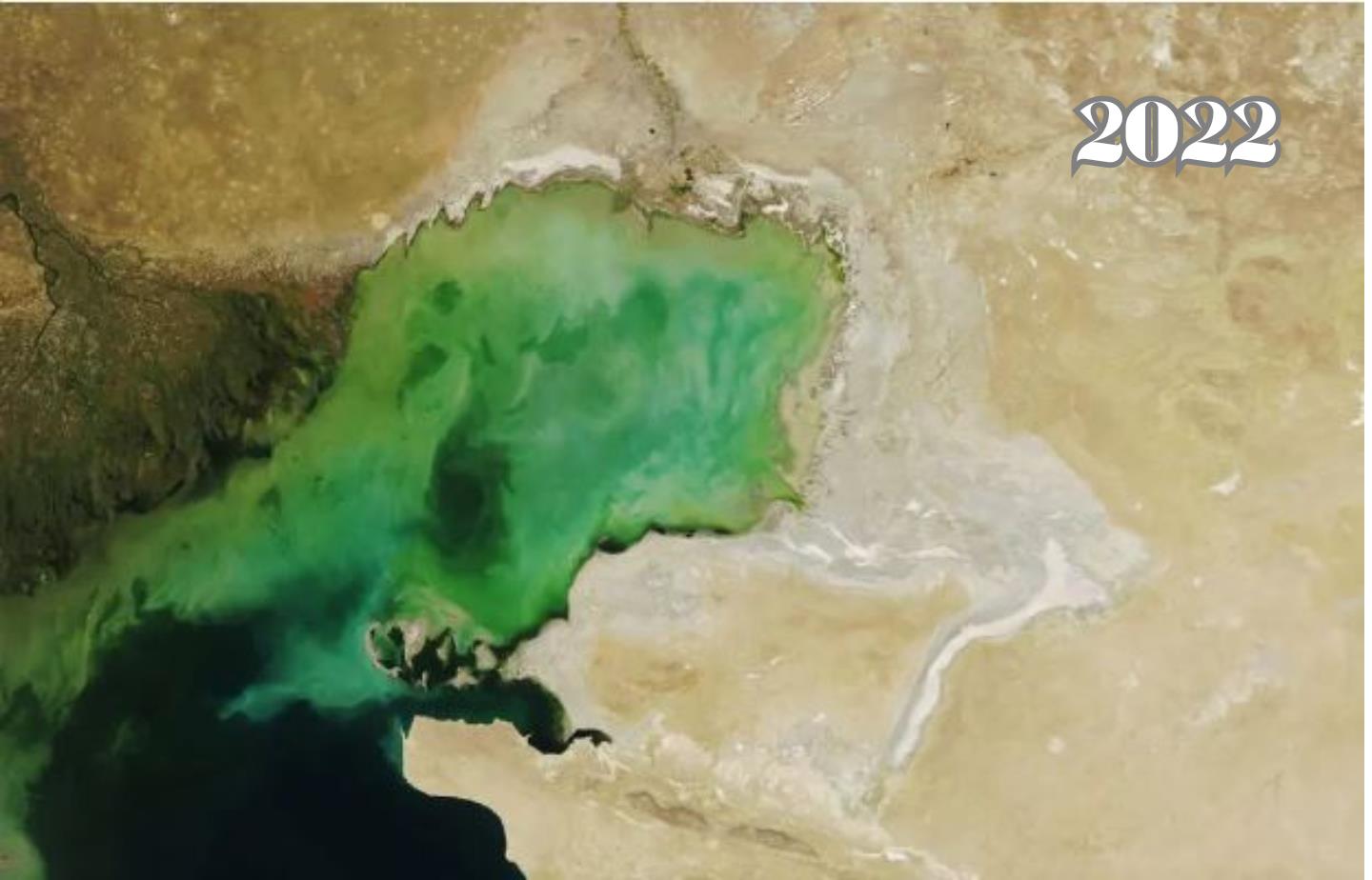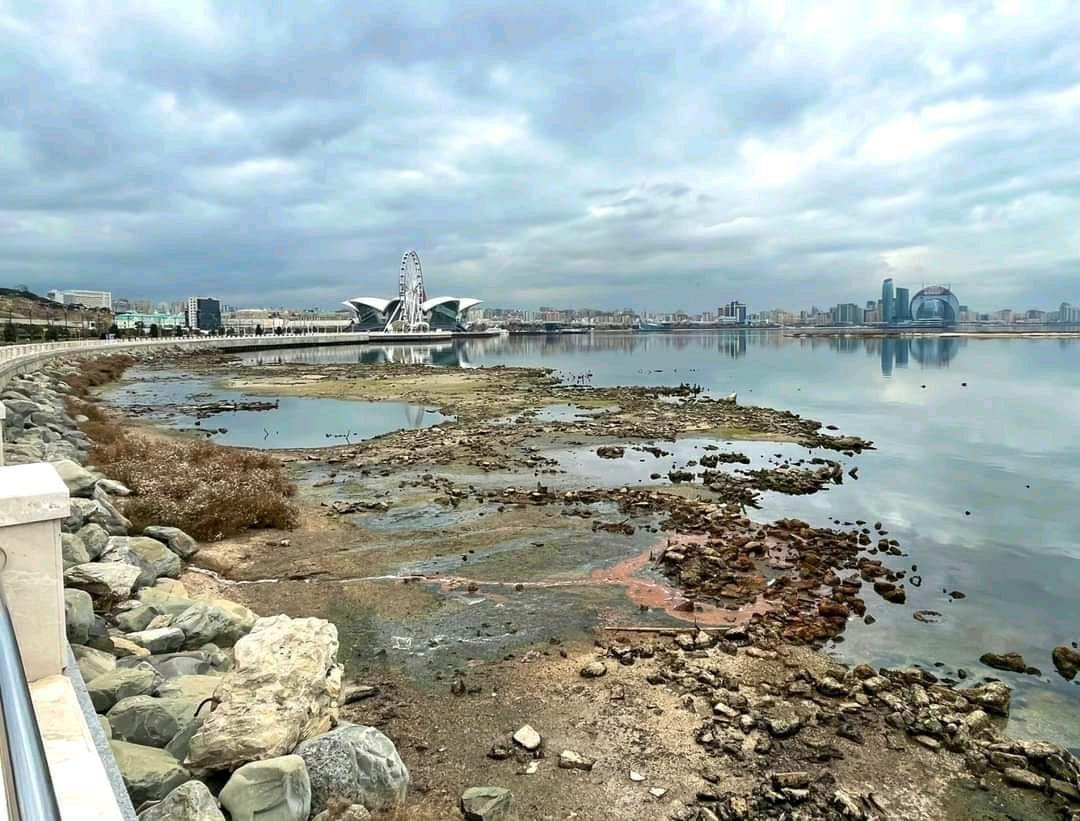
Caspian Sea Coastal Retreat Alarms About New Environmental Threats

Fatime Letifova Read more
The Caspian Sea, the largest inland body of water shared byIran, Russia, Azerbaijan, Kazakhstan, and Turkmenistan, facesdecreasing water levels. Some scientific reports suggest it coulddrop by 9 to 18 metres by the century's end, potentially losing aquarter of its area and uncovering around 93,000 square kilometresof dry land, similar in size to Portugal.
In order to investigate the reasons for the decrease in thewater level in the Caspian Sea, it is necessary to first look atthe rivers that feed this giant lake. Russia's construction of damson the Volga River, the primary water source for the Caspian, hassignificantly reduced water flow into the sea.
For example, Dubna is a small town three hours from Moscow bytrain that sits on the banks of the Ivankovo Reservoir, the firstpart of a massive hydropower project called“Big Volga,” whoseconstruction spanned decades during the Soviet era. The complex,consisting of 11 dams on the Volga and its largest tributary, theKama, is responsible for about 5% of the total electricityproduction in Russia.
When the station in Dubna was designed in the early 1930s, theyoung Soviet state had just decided to catch up with the capitaliststates of the West by rapidly accelerating its industrialdevelopment-but in order to do so, it needed to generate energy ona massive scale. By the time the last station was built, in the1980s, the Soviet Union, having just hosted the Olympics for thefirst time, was about to launch perestroika, a program oflarge-scale democratic reforms intended to end an era of stagnationand revitalise the flailing state. The history of the Big Volgaproject is, in a sense, the history of Soviet industrialization. Itis also a history of rivalry with the US, which, for decades, racedthe Soviets to build bigger, more impressive dams.
The river has become polluted, silted up, and overwhelmed byinvasive species. Water flows at a tenth of the speed it did beforethe dams were constructed, according to estimates by researchers atthe Institute of Ecology of the Volga River Basin in the centralRussian port city of Togliatti. Widespread toxic algal blooms arenow common.
After the Soviet Union's collapse, the newly formed Russiangovernment was left trying to fix the Soviet machine. The federalVolga Revival program, a conservation and restoration effortlaunched in 1996, met its demise just two years later, during about of deep economic crisis and government turmoil. Water qualityin the Volga hasn't improved substantially over the last threedecades.
Geopolitical tensions and sanctions have also driven Russia tointensify the use of Volga water resources for agriculture,exacerbating the decline. It is telling that the Volga's water hasbeen put to use to provide for the Russian capital. It no longerbelongs to the people along the Volga.
The change in the water level of the Caspian Sea poses a threatto the surrounding areas. If the water level declines further,there is a threat to the unique biodiversity of the water body changes in the water level of the Caspian Sea would causenot only environmental consequences but also socio-economic ones,such as damage to coastal enterprises, loss of livelihoods,migration, and infrastructure degradation. The higher the rate ofoscillation, the worse these consequences would be. Therefore, itis important to conduct research aimed at discovering the mainreasons affecting the Caspian Sea level and constructing modelsthat would provide reliable forecasts in order to prevent potentialdamage.
In addition, the decrease in Caspian waters is clearly observedalong the eastern strip of Azerbaijan and especially in the area ofBaku Boulevard. The receding waters near the boulevard made itimpossible for even cruise ships to approach the shore.
Azerbaijani ecologists also associate this with global warming,and it is noted that this situation may have a negative impact onthe country's climate and seismic processes in the future.
Currently, the National Adaptation Plan (NAP) support projectfor adaptation is being implemented in Azerbaijan. The prioritysectors were identified as water, agriculture, and coastal areas expected increase in extreme events on the Caspian Sea coastalareas, such as extremely high waves, strong winds, and flooding,makes those areas particularly vulnerable to climate change andrequires the development of targeted adaptation programs.
It is worth noting that Azerbaijan has joined the fight againstglobal climate change by being a party to the UN FrameworkConvention on Climate Change. Since 1995, the Conference of theParties to the United Nations Framework Convention on ClimateChange (UNFCCC) has been convened every year. The event aims toexamine global progress in combating climate change. COP29 willtake place in Azerbaijan in 2024. The decision was made during theplenary session of COP28 on December 11.
As part of the Climate Action Agenda, COP29 will also featurethe Caspian Sea initiative. This Sea initiative might facilitateresolving the sea issue not only at the national and regionallevels but also under the global climate change adaptationprograms.
It should be clear that the Caspian Sea level problem unitesfive countries. These countries have a common responsibility toprevent pollution and to use the resources of the Caspian withoutharm.
Legal Disclaimer:
MENAFN provides the
information “as is” without warranty of any kind. We do not accept
any responsibility or liability for the accuracy, content, images,
videos, licenses, completeness, legality, or reliability of the information
contained in this article. If you have any complaints or copyright
issues related to this article, kindly contact the provider above.





















Comments
No comment